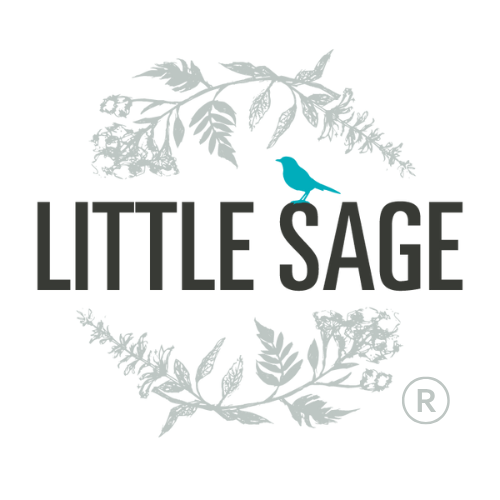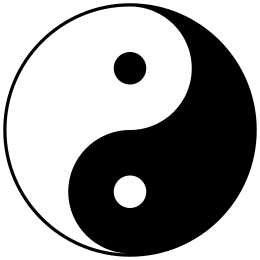In a world where holistic health practices are gaining momentum, Traditional East Asian Medicine (TEAM) is growing in popularity. But despite this, several myths continue to cloud its reputation. Today, I’m setting the record straight — with science, soul, and ancestral clarity — by debunking the top three myths about TEAM that might just change your perspective on this ancient yet evolving practice.
Myth 1: Traditional East Asian Medicine is Unscientific
The Assumption: TEAM is based on superstition and outdated beliefs.
Reality Check: TEAM is rooted in thousands of years of observation, pattern recognition, and body-mind-soul integration. And in recent decades, modern science has increasingly caught up. From prestigious journals to global health organizations, the evidence is mounting.
So no — this isn’t just “woo woo.” It’s a body of medicine increasingly supported by evidence, practiced in hospitals like Cleveland Clinic and Mayo, and rooted in the understanding that healing is both physical and energetic.
For example:
- A 2018 meta-analysis published in The Journal of Pain reviewed over 20,000 patients and concluded that acupuncture is more effective than placebo for chronic pain — and that its benefits persist over time (Vickers et al., 2018).
- A 2003 WHO report, titled "Acupuncture: Review and Analysis of Reports on Controlled Clinical Trials," categorizes diseases and disorders for which acupuncture has been evaluated through controlled trials. See my notes section below for an example of conditions mentioned in the report. Though further clinical trials were recommended for some conditions, the inclusion of acupuncture in this world report shows its increasing importance and integration into the modern health care system.
- Qi Gong, a movement and breathwork practice within TEAM, has been shown in randomized trials to reduce anxiety and improve immune function (Jahnke et al., 2010).
Soul Note:
In TEAM, healing isn’t about fixing a broken machine — it’s about restoring harmony. This resonates deeply with those of us carrying unseen wounds. For many, especially women of color, this model offers a more honest framework for healing: one that acknowledges how trauma lives in the body and invites us back into wholeness.
Myth 2: TEAM Is Only About Acupuncture
The Assumption: If you’ve heard of Traditional East Asian Medicine, you probably picture needles — and only needles.
Reality Check: While acupuncture gets the spotlight, TEAM offers a full toolkit: herbal medicine, qigong, taichi, breathwork, diet therapy, bodywork, and more.
In short: it’s not just acupuncture. It’s a full spectrum of healing modalities that treat the whole person — physically, emotionally, energetically.
Herbal Medicine:
- Xiao Yao San: A 2022 systematic review/meta-analysis covering 48 RCTs (4,403 patients) concluded Xiao Yao San improved gastrointestinal symptoms and reduced anxiety and depression in functional GI disorders (Liu et al., 2022).
- Another meta-analysis focused on PCOS (9 trials, 736 women) found Xiao Yao San increased ovulation and pregnancy rates and improved insulin resistance (Zhou et al., 2023).
Qigong & Breathwork:
- While high‑quality RCT data is limited, clinical studies—such as a 12-week trial of Qigong, Tai Chi, and meditation in 175 participants—showed significant improvements in lower back pain, balance, stress, sleep, immunity, and cognitive function (Yang et al., 2024).
- A body of research on Qigong indicates benefits for circulation, flexibility, strength, blood pressure, stress regulation, and mental well-being (Jahnke et al., 2010).
Dietary Therapy:
- IBS Case: A 2013 meta-analysis of 72 RCTs combining TCM and Western medicine found integration significantly improved IBS symptoms (Relative Risk: ~1.21) compared to Western medicine alone (Li et al., 2015).
Soul Note:
What I love about TEAM is that it meets you where you are. Whether you’re exhausted, anxious, inflamed, or disconnected from your body, there’s a modality within TEAM that can serve as a gentle doorway back to yourself.
Myth 3: TEAM Is Only for Pain Management
The Assumption: “Oh, acupuncture? That’s just for pain, right?”
Reality Check: Yes, TEAM is excellent for pain — but its reach goes far beyond musculoskeletal relief.
TEAM used to support:
- Fertility, menstrual, perimenopausal and menopause health
- Anxiety, depression, PTSD
- Digestive issues (like IBS, reflux, bloating)
- Long-COVID, chronic fatigue, immune dysregulation
Multiple studies have shown TEAM’s effectiveness for:
- Depression: Xiao Yao San and acupuncture both show positive outcomes for mood regulation.
- Insomnia: TEAM strategies have been shown to improve sleep onset, quality, and duration (Zhuang et.al., 2022).
- Hormonal health: Acupuncture and herbs regulate cycles, reduce PMS, alleviate period pain (Song et al., 2025) and menopause support (Jo et al. 2021).
Soul Note:
When we treat the root — not just the symptom — we create space for the body to remember its natural rhythm. For women living with chronic conditions and complex trauma, this is revolutionary.
Where Science Meets Soul — and Ancestral Clarity
Traditional East Asian Medicine doesn’t separate science from spirit. It reminds us that healing is multi-layered — physical, emotional, and ancestral. For many women, especially those carrying trauma, TEAM can be a sacred bridge:
- A way to restore trust in the body.
- A path to remember who we were before the wound.
- A map to reclaim belonging and reconnect with our own roots.
Even if TEAM isn’t your direct lineage, it can still offer wisdom — and a bridge — toward your own ancestral healing.
These practices can be more than medicine. They can be a sacred path to reclaim what was never truly lost, only buried beneath systems that taught us to forget.
My Notes
1. Curious about the difference between TEAM and TCM?
- TEAM includes systems like Traditional Chinese Medicine (TCM), Korean, Japanese, and other East Asian healing traditions — each with its own nuance and history. (Curious about the difference between TEAM and TCM? I break it down in this blog post.)
2. Here is a list of some of the diseases and disorders in the 2003 WHO report, titled "Acupuncture: Review and Analysis of Reports on Controlled Clinical Trials", for which acupuncture has been evaluated through controlled trials:
- Adverse reactions to radiotherapy and/or chemotherapy
- Allergic rhinitis (including hay fever)
- Biliary colic
- Depression (including depressive neurosis and depression following stroke)
- Dysentery, acute bacillary
- Dysmenorrhoea, primary
- Epigastralgia, acute (in peptic ulcer, acute and chronic gastritis, and gastrospasm)
- Facial pain (including craniomandibular disorders)
- Headache
- Hypertension, essential
- Hypotension, primary
- Induction of labour
- Knee pain
- Leukopenia
- Low back pain
- Malposition of fetus, correction of
- Morning sickness
- Nausea and vomiting
- Neck pain
- Pain in dentistry (including dental pain and temporomandibular dysfunction)
- Periarthritis of shoulder
- Postoperative pain
- Renal colic
- Rheumatoid arthritis
- Sciatica
- Sprain
- Stroke
- Tennis elbow
3. Why Are These Studies from PubMed?
You might notice that many of the studies I reference come from something called PubMed.
So what is it — and why does it matter?
PubMed is like a library for the scientific world. It’s run by the National Institutes of Health and houses millions of peer-reviewed research studies — the kind doctors and medical schools rely on to shape evidence-based care. It’s vetted, clinical, often very dense — and yes, deeply respected by the Western medical system.
4. A Note for Women of Color Seeking Deeper Healing
If you’re a woman of color reading this — especially one who’s felt dismissed, unseen, or spiritually disconnected in your healing journey — I want you to know this: I see you.
These tools from Traditional East Asian Medicine aren’t just about symptom relief. They can also support something deeper — your longing for belonging, reconnection, and ancestral healing.
Whether or not TEAM is part of your direct lineage, it can be a sacred bridge — a way to begin reclaiming what colonization and survival may have severed. I share these practices with deep respect, knowing they can help guide you back to the wisdom within your own body, your own bloodline, and your own knowing.
References
- Vickers AJ, et al. (2018). Acupuncture for Chronic Pain: Update of an Individual Patient Data Meta-Analysis. The Journal of Pain.
- Jahnke R, et al. (2010). A Comprehensive Review of Health Benefits of Qigong and Tai Chi. Am J Health Promot.
- Liu Q, et al. (2022). Efficacy and Safety of Chinese Herbal Medicine Xiao Yao San in Functional Gastrointestinal Disorders: A meta-Analysis and Trial Sequential Analysis of Randomized Controlled Trials. Frontiers in Pharmacology.
- Zhou et al., (2023). Efficacy and safety of Chinese patent medicine Xiao Yao San in polycystic ovary syndrome: A systematic review and meta-analysis. Journal of Ehtnopharmacology.
- Yang et al., (2024). A Tai chi and qigong mind-body program for low back pain: A virtually delivered randomized control trial. North American Spine Society Journal (NASS).
- Li et al., (2015). A systematic review of integrated traditional Chinese and Western medicine for managing irritable bowel syndrome. American Journal of Chinese Medicine.
- Zhuang et.al., 2022. Observation on the Clinical Efficacy of Traditional Chinese Medicine Non-Drug Therapy in the Treatment of Insomnia: A Systematic Review and Meta-Analysis Based on Computer Artificial Intelligence System. Computer Intelligence Neuroscience.
- Song et al., 2025. Systematic review and meta-analysis of the effectiveness of moxibustion therapy for primary dysmenorrhea. Front Med.
- Jo et al. 2021. Efficacy Comparison of Different Acupuncture Treatments for Hot Flashes: A Systematic Review with Network Meta-Analysis. Journal of Acupuncture Research.

